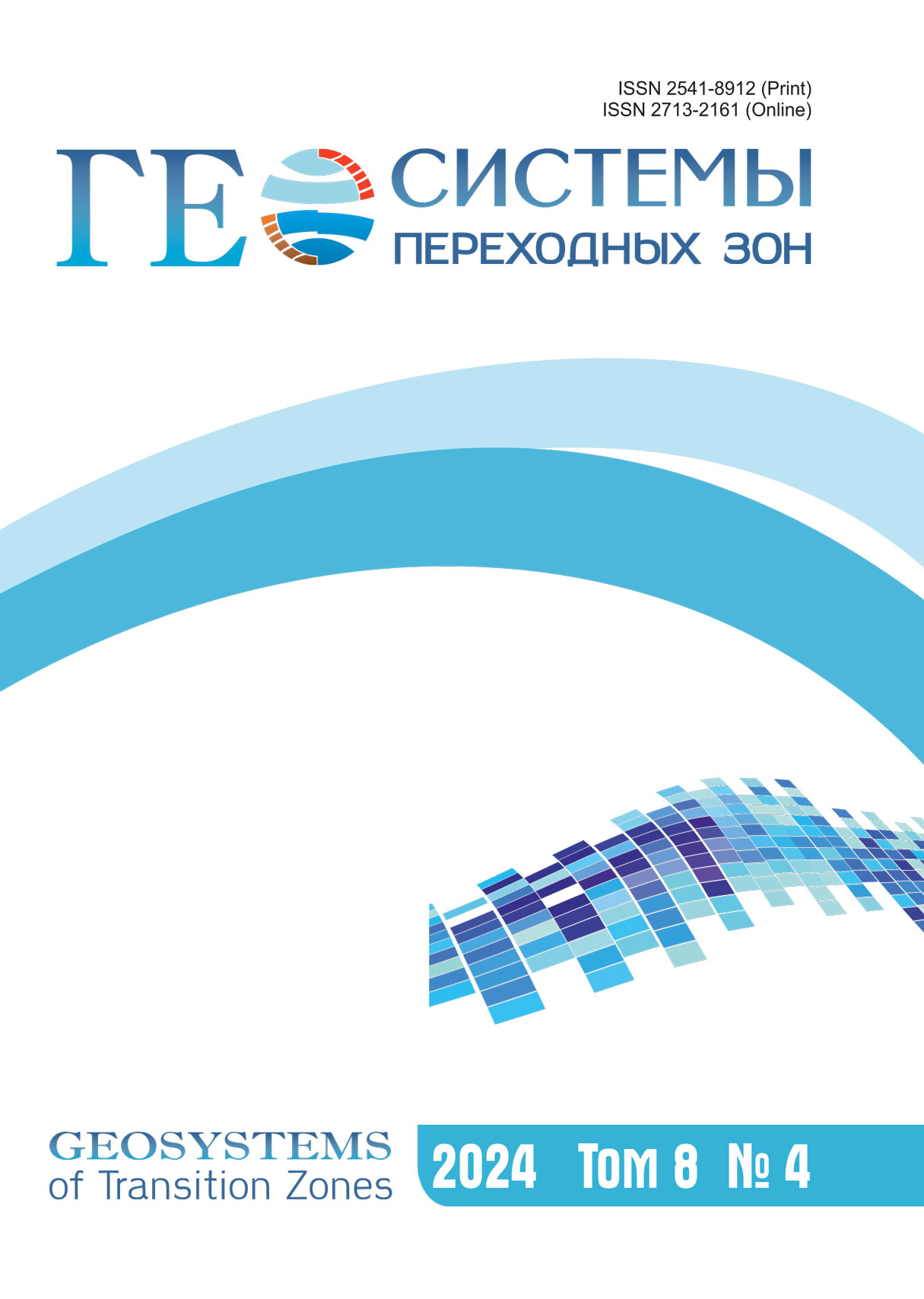
| Abstract PDF ENG. .PDF RUS | Full text PDF RUS |
Abstract. The article discusses methodological issues of applying phase characteristics in determining the arrival time of seismic waves. The accuracy of earthquake location depends on the precision with which the arrival times of longitudinal, transverse, and surface waves can be determined. Determining the phase characteristics of seismic waves is crucial for locating nearby earthquakes, since these waves are different for distant earthquakes. Methods for determining the arrival times of seismic waves of various natures characterized by different frequencies are investigated based on the analysis of the phase characteristics of signals from seismic events. Theoretical underpinnings of this approach are considered, and the results of processing seismic data on determining the arrival times of wave packets of the corresponding elastic waves associated with earthquakes are presented.
Keywords:
earthquakes, Hilbert transform, phase spectrum, arrival time
For citation: Aleksandrov P.N., Stasenko L.V. Determination of the arrival time of seismic signals based on the analysis of their phase characteristics. Geosistemy perehodnykh zon = Geosystems of Transition Zones, 2025, vol. 9, No. 3, pp. 265-276. (In Russ.).
https://doi.org/10.30730/gtrz.2025.0.doa-355, http://journal.imgg.ru/web/full/f2025-0-355.pdf
Для цитирования: Александров П.Н., Стасенко Л.В. Определение моментов времени вступления сейсмических сигналов на основе анализа их фазовых характеристик. Геосистемы переходных зон, 2025, т. 9, № 3, c. 265–276.
https://doi.org/10.30730/gtrz.2025.0.doa-355, http://journal.imgg.ru/web/full/f2025-0-355.pdf,
https://elibrary.ru/pnohgu
References
1. Eiby G.A. 1980. Earthquakes. London: Heinemann, 209 p.
2. Morozov A.N., Vaganova N.V. 2022. Guidelines for processing local and regional earthquakes of the Western Eurasian Arctic. Arkhangel'sk: FITSKIA UrO RAN, 95 p. (In Russ.).
3. Khritova M.A., Gilyova N.A. 2013. Automated processing of regional earthquakes in Cisbaikalia and Transbaikalia. Seismic Instruments, 49(1): 53–63. https://doi.org/10.3103/s0747923913010052
4. Shulakov D.Yu. 2014. Development of the seismological monitoring system in the city of Berezniki. In: Modern methods of processing and interpretation of seismological data: Materials of the Ninth International Seismological Workshop, September 8–12, 2014. Obninsk: GS RAS, p. 358–361. (In Russ.).
5. Freiberger W.F. 1963. An approximate method in signal detection. Quarterly of Applied Mathematics, 20: 373–378.
6. Kaveh M.S., Mansouri R., Keshavarz A. 2019. Automatic P-wave picking using undecimated wavelet transform. Journal of Seismology, 23: 1031–1046. https://doi.org/10.1007/s10950-019-09852-z
7. Jiang W., Ding W., Zhu X., Hou F. 2022. A recognition algorithm of seismic signals based on wavelet analysis. Marine Science and Engineering. https://doi.org/10.3390/jmse10081093
8. Rybin A.K., Nigmatullin R.R., Nepeina K.S., Kaznacheev P.A., Aleksandrov P.N. 2019. Analytical description of the seismic signals based on the nonorthogonal amplitude-frequency analysis of the smoothed signals. Vestnik KRAUNTs. Nauki o Zemle = Bull. of KRAESC. Earth Sciences, 1(41): 15–24. (In Russ.). https://doi.org/10.31431/1816-5524-2019-1-41-15-24
9. Lyubushin A.A. 2009. Synchronization trends and rhythms of multifractal parameters of the field of low-frequency microseisms. Izv, Physics of the Solid Earth, 45(5): 381–394. https://doi.org/10.1134/s1069351309050024
10. Dolgopolov B.K., Sychev V.N., Imashev S.A. 2017. [Methodology of multifractal signal analysis using seismic noise as an example]. [ Science, new technologies and innovations of Kyrgyzstan ], 1: 9–14. (In Russ.).
11. Sychev V.N., Imashev S.A. 2017. Estimation of Hurst exponent of seismic signal. Geosistemy perehodnykh zon = Geosystems of Transition Zones, 1(2): 50–61. (In Russ.). doi.org/10.30730/2541-8912.2017.1.2.050-061
12. Baryshnikov N.A., Abzalilov I.A, Turuntaev S.B. 2023. Application of synthetic waveforms for creating a deep learning model for identifying first arrivals in seismic records. Dynamic Processes in Geospheres, 15(3): 38–53. (In Russ.). http://doi.org/10.26006/29490995_2023_15_3_38
13. Davydov A.B., Shemarov A.I. 2011. [Detector to detecting the moment of seismic wave entry]. Doklady BGUIR, 55(1): 23–30. (In Russ.).
14. Imashev S.A., Aladev A.V. 2024. SeisDetNet: Artificial neural network for seismic event detection. Part 1: Architecture. Vestnik KRAUNTs. Nauki o Zemle = Bull. of KRAESC. Earth Sciences, 4(64): 59–69. (In Russ.). https://doi.org/10.31431/1816-5524-2024-4-64-59-70
15. Imashev S.A., Aladev A.V. 2025. SeisDetNet: artificial neural network for seismic event detection. Part 2: Model assessment. Vestnik KRAUNTs. Nauki o Zemle = Earth Sciences Bulletin of KRAESC, 1(65): 28–37. (In Russ.).
16. Korn G.A., Korn T.M. 1968. Mathematical handbook for scientists and engineers: Definitions, theorems, and formulas for reference and review. New York: McGraw-Hill Book Company, 1130 p.
17. White J.E. 1983. Underground sound. Application of seismic waves. Amsterdam; Oxford; New York, 257 p. (Methods in geochemistry and geophysics; 18).
18. Nepeina K.S., Kaznacheev P.A., Aleksandrov P.N. 2019. Seismic monitoring of modern geodynamic processes using a gradient system. Vestnik KRAUNTs. Nauki o Zemle = Bull. of KRAESC. Earth Sciences, 4(44): 84–92. (In Russ.). https://doi.org/10.31431/1816-5524-2019-4-44-84-92
19. Kaznacheev P.A., Matiukov V.E., Aleksandrov P.N., Nepeina K.S. 2019. Development of three-axis gradient system for seismoacoustic data acquisition in geodynamically active regions. Seismic instruments, 55: 535–543. https://doi.org/10.3103/s0747923919050062